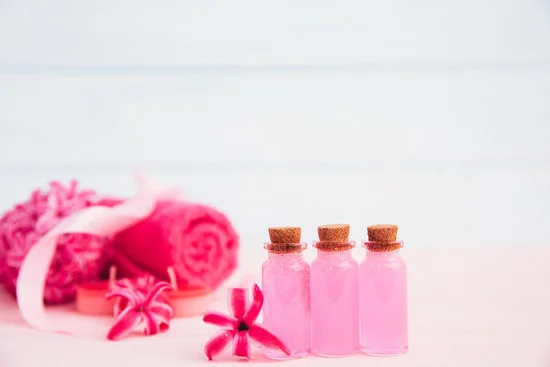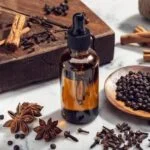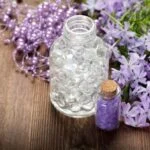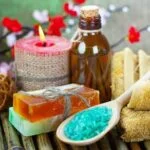Aromatherapy massage is a unique and holistic healing practice that combines the benefits of massage therapy with the therapeutic effects of essential oils. During an aromatherapy massage, the therapist uses gentle strokes and techniques to apply these natural oils onto the client’s body. This results in not only physical relaxation, but also mental and emotional well-being.
In this article, we will explore the world of aromatherapy massage and delve into its numerous benefits. From setting the mood with essential oils to targeting specific concerns such as stress relief or pain management, we will provide you with a comprehensive guide on what to expect during an aromatherapy massage.
Aromatherapy massage offers a multitude of benefits for both the body and mind. The combination of touch and scent creates a powerful sensory experience that promotes deep relaxation, reduces muscle tension, relieves pain, improves circulation, and enhances overall well-being. Additionally, the inhalation of essential oils during the massage can stimulate brain activity, uplift mood, relieve anxiety and depression, boost concentration, and promote better sleep.
Join us on this journey as we explore how aromatherapy massage can transform your pampering routine into a truly restorative experience. Discover how essential oils work on the body and mind, learn about different techniques used in aromatherapy massage, select the perfect essential oils for your individual needs, and uncover post-massage rituals that will extend the benefits long after your session ends. Get ready to embark on a path to ultimate relaxation and healing.
Setting the Mood
One of the key elements of an aromatherapy massage is creating a relaxing atmosphere. This involves using essential oils to set the mood and enhance the overall experience. Essential oils are concentrated plant extracts that have been used for centuries for their therapeutic properties. They not only provide a pleasing fragrance but also offer various benefits for the body and mind.
To create a relaxing atmosphere, the first step is to choose the right essential oils. Some popular options for relaxation include lavender, chamomile, ylang-ylang, and bergamot. Lavender is known for its calming properties and can help reduce anxiety and promote better sleep.
Chamomile is another soothing oil that aids in relaxation and can relieve stress. Ylang-ylang has a sweet floral scent that promotes relaxation and helps improve mood. Lastly, bergamot has a citrusy aroma that is uplifting and helps alleviate feelings of depression and anxiety.
Once you have selected your essential oils, it’s time to set up your massage space. Start by dimming the lights or using soft lighting such as candles or Himalayan salt lamps. Consider playing soft, soothing music in the background to further enhance relaxation. Next, create a tranquil ambiance by tidying up the space and removing any distractions or clutter.
To distribute the fragrance throughout the room, you can use an aromatherapy diffuser or burner. Add a few drops of your chosen essential oils into water or carrier oil in the diffuser or burner, and allow it to release gentle mists or vapors into the air. This will create an inviting atmosphere before even starting the massage.
By setting the mood with essential oils, you can create a serene environment that promotes deep relaxation during an aromatherapy massage. The combination of pleasant scents, soft lighting, soothing music, and a clutter-free space will contribute to an enhanced sensory experience for both body and mind.
Selecting the Perfect Essential Oils for Your Aromatherapy Massage
Selecting the perfect essential oils for an aromatherapy massage is a crucial step in enhancing the overall experience and effectiveness of the massage treatment. Essential oils are highly concentrated plant extracts that possess various therapeutic properties. Each oil has its own unique scent, properties, and benefits, allowing for a customized and tailored massage experience.
When choosing essential oils for an aromatherapy massage, it is important to consider the desired effect or goal of the treatment. Different oils have different effects on the body and mind, making it essential to select oils that best align with these goals.
For example, lavender oil is known for its calming and relaxing properties, making it ideal for reducing stress and promoting sleep. On the other hand, peppermint oil is invigorating and can be used to alleviate fatigue and boost energy levels.
It is also crucial to take into account any individual sensitivities or allergies when selecting essential oils. Some individuals may have allergies or sensitivities to specific plants or scents, which can cause adverse reactions when applied directly to the skin or inhaled. Conducting a patch test prior to the massage can help identify any potential allergic reactions.
In addition to considering the desired effect and individual sensitivities, it is important to choose high-quality essential oils from reputable sources. Pure, therapeutic-grade essential oils are generally more expensive but provide better results due to their superior quality and purity. Reputable brands will often provide information about how their oils are sourced, distilled, and tested for quality.
| Essential Oil | Therapeutic Properties |
|---|---|
| Lavender | Calming, relaxing, promotes sleep |
| Peppermint | Invigorating, relieves fatigue, boosts energy |
| Eucalyptus | Clears sinuses, relieves congestion, energizing |
| Chamomile | Soothing, anti-inflammatory, promotes relaxation |
| Rosemary | Stimulating, improves circulation, enhances focus and memory |
Preparing for the Massage
As you prepare for an aromatherapy massage, it is important to go through a consultation and assessment session with your therapist. This step ensures that the massage is customized to your individual needs and preferences, allowing you to fully benefit from the experience.
During the consultation, your therapist will take the time to understand your health history, any current medical conditions, allergies, or sensitivities you may have. This information is crucial in determining which essential oils will be most suitable for your massage. It also helps the therapist identify any potential contraindications or precautions that need to be taken into consideration.
In addition to discussing your physical health, the consultation may also touch on your emotional well-being and any specific concerns or goals you have for the massage. For example, if you are seeking stress relief or improved sleep, this information will guide the selection of essential oils and massage techniques used during the session.
The assessment part of the process involves evaluating your overall condition before the massage begins. Your therapist may ask you about any areas of tension or pain in your body or inquire about recent injuries or surgeries that could affect the massage. This assessment allows them to tailor the session by focusing on specific areas of concern or avoiding certain techniques that may aggravate existing conditions.
By engaging in a thorough consultation and assessment process prior to your aromatherapy massage, you can ensure that every aspect of your treatment is personalized and safe. This prepares both you and your therapist for a successful session that addresses your unique needs and promotes optimal relaxation and healing.
Step-by-Step Guide
During an aromatherapy massage, there are several steps and experiences that you can expect. This step-by-step guide will provide you with an overview of what to anticipate during your session.
First, before the massage begins, you will be asked to remove any jewelry or clothing that may interfere with the massage. You will then be directed to lie down on a comfortable massage table, either in a face-up or face-down position, depending on the therapist’s technique.
Next, the aromatherapist will prepare a blend of essential oils specifically tailored to your needs. They may ask you about any health concerns or preferences you have regarding scents or specific oils. Common essential oils used in aromatherapy massages include lavender for relaxation, eucalyptus for respiratory support, and tea tree oil for its antimicrobial properties.
Once the oils are chosen and blended, the therapist will begin by applying gentle pressure and strokes using their hands and forearms. They may use different techniques such as effleurage (long gliding strokes), petrissage (kneading motions), or friction (circular movements) to help release tension and promote relaxation.
As the massage progresses, you will start to feel the therapeutic effects of the essential oils. The aroma will permeate the room, adding to the overall sensory experience. The combination of touch and smell creates a deeply calming and rejuvenating effect on both the body and mind.
Throughout the session, it is important to communicate with your therapist about your comfort level and any areas that may require more attention or lighter pressure. A good masseuse will always prioritize your comfort and ensure that you feel safe and relaxed throughout the entire treatment.
The Healing Power of Essential Oils
Essential oils have long been recognized for their therapeutic properties and healing benefits. In aromatherapy massage, these oils are used to enhance the overall experience and promote relaxation, stress relief, pain management, and sleep improvement. The power of essential oils lies in their ability to work on both the body and mind, creating a holistic approach to healing.
Working on the Body
When applied during an aromatherapy massage, essential oils penetrate the skin and are absorbed into the bloodstream. From there, they interact with various physiological processes in the body. Different oils have different effects, but they all work towards restoring balance and promoting overall well-being.
For example, certain essential oils have anti-inflammatory properties that can help reduce muscle soreness and inflammation after a massage. Others have analgesic properties that can provide pain relief or soothe headaches. Additionally, some oils are known for their antibacterial or antiviral properties, which can support a healthy immune system and protect against infections.
Working on the Mind
The sense of smell is closely linked to our emotions and memories. When inhaled during an aromatherapy massage, essential oil molecules stimulate receptors in the nose that send signals to the brain’s limbic system – the area responsible for emotions and memory.
This direct pathway between scent and emotion explains why different essential oils can evoke various emotional responses. For example, lavender oil is often used for its calming effects and ability to reduce anxiety or stress. On the other hand, citrus scents like lemon or orange can uplift mood and promote a sense of happiness.
In addition to emotional benefits, certain essential oils also have cognitive-enhancing effects. Peppermint oil, for instance, is believed to improve focus and concentration due to its stimulating properties.
Overall, through their impact on both the body and mind, essential oils play a vital role in maximizing the therapeutic benefits of an aromatherapy massage. By carefully selecting and utilizing these oils, a skilled aromatherapist can create a truly transformative experience for their clients.
Techniques Used in Aromatherapy Massage
Effleurage and petrissage are two commonly used techniques in aromatherapy massage, along with a variety of other techniques that can be incorporated based on the individual’s specific needs and preferences. These techniques are designed to manipulate the soft tissues of the body, promoting relaxation, pain relief, and overall wellness.
Effleurage is a gentle stroking motion that is used at the beginning and end of an aromatherapy massage session. This technique involves long, gliding strokes with varying pressure, which helps to warm up the muscles and prepare them for deeper work. Effleurage is also used to spread the essential oils across the skin, allowing their therapeutic properties to be absorbed into the body.
Petrissage, on the other hand, involves kneading, squeezing, and rolling movements that target deeper layers of muscle tissue. This technique helps to release tension and knots in the muscles, improve circulation, and promote lymphatic drainage. Petrissage can be particularly beneficial for individuals who experience chronic pain or muscle stiffness.
In addition to these two main techniques, aromatherapy massage may also incorporate other techniques such as friction, tapotement (gentle tapping or percussion), and vibration. Each technique has its own unique benefits and effects on the body.
It’s important to note that during an aromatherapy massage session, the therapist will tailor their approach based on the client’s specific needs and concerns. They will take into consideration factors such as your medical history, any areas of tension or discomfort you may have, and your desired outcome from the massage. By combining various techniques and adjusting pressure accordingly, they can provide a customized massage experience that addresses your individual needs.
| Effleurage | Petrissage |
|---|---|
| Warms up the muscles | Targets deep muscle tissue |
| Spreads essential oils across the skin | Helps release tension and knots in the muscles |
| Promotes relaxation and improves circulation | Aids in lymphatic drainage and pain relief |
Overall, the techniques used in aromatherapy massage are designed to provide a holistic approach to healing and relaxation. By combining various strokes and movements, therapists can create a customized experience that targets your specific concerns, whether it be stress relief, pain management, or sleep improvement. The therapeutic effects of these techniques, when combined with the healing power of essential oils, make aromatherapy massage a truly rejuvenating experience for both the body and mind.
Targeting Specific Concerns
Aromatherapy massage can be tailored to target specific concerns such as stress relief, pain management, and sleep improvement. The power of essential oils combined with the techniques used in aromatherapy massage can provide effective relief and promote overall well-being.
Stress relief is one of the primary benefits of aromatherapy massage. Certain essential oils, such as lavender, chamomile, and bergamot, are known for their calming properties and can help alleviate anxiety and reduce stress levels. During an aromatherapy massage targeting stress relief, the therapist will use specific techniques to promote relaxation, such as gentle kneading and long strokes. The soothing scent of the selected essential oil will not only relax your mind but also help release tension in your muscles.
Pain management is another concern that can be addressed through aromatherapy massage. Essential oils like peppermint, eucalyptus, and ginger have analgesic and anti-inflammatory properties that can help relieve muscle aches and joint pain.
When targeting pain management during an aromatherapy massage session, the therapist may focus on specific areas where you experience discomfort or use specialized techniques like friction or deep tissue massage to address deeper layers of muscle tension. The combination of these techniques with the pain-relieving properties of the chosen essential oils can offer effective relief from chronic pain or sore muscles.
Moreover, aromatherapy massage can also help improve sleep quality for those struggling with insomnia or other sleep disorders. Essential oils such as lavender, sandalwood, and vetiver are known for their sedative effects and ability to promote relaxation. Aromatherapy massage for sleep improvement may involve longer sessions using slow and gentle strokes along with specific pressure points targeting better sleep patterns. By inhaling the calming aroma while receiving a soothing massage, you may experience improved sleep duration and quality.
Aftercare and Post-Massage Rituals
After receiving an aromatherapy massage, it is important to take special care of your body in order to maximize the benefits of the treatment and prolong the relaxation experience. This section will provide some guidance on post-massage rituals and aftercare practices that can help you continue to enjoy the effects of aromatherapy long after your massage session.
Rest and Hydration
One of the most important aspects of post-massage care is allowing yourself time to rest. After an aromatherapy massage, your body may feel relaxed and in need of some downtime. This is a perfect opportunity to prioritize self-care and indulge in activities that promote deep relaxation, such as taking a soothing bath, reading a book, or simply resting in a quiet environment. Avoid engaging in strenuous activities or exposing yourself to stressful situations immediately following your massage.
In addition to rest, hydration is crucial after a massage. Drinking plenty of water helps flush out toxins released during the massage process and keeps your muscles hydrated. Remember that essential oils used during the aromatherapy massage can have detoxifying effects on the body. By staying well-hydrated, you can support this cleansing process and help maintain optimal health.
Maintaining the Aromatherapy Experience at Home
To enhance the benefits of your aromatherapy massage, consider bringing some elements of the treatment into your daily routine at home. One way to do this is by using essential oils for personal use. The same oils used by your therapist during the massage can be applied topically or diffused at home to recreate a relaxing atmosphere. Lavender oil, for example, is known for its calming properties and can help promote better sleep when used before bedtime.
Another way to extend the therapeutic effects of aromatherapy is through self-massage techniques. While it may not be the same as a professional massage, self-massage can help relieve muscle tension and stress. Applying gentle pressure to specific areas using essential oils can soothe sore muscles, improve circulation, and enhance overall wellbeing.
Follow-Up Consultations
After your initial aromatherapy massage session, it is beneficial to schedule follow-up consultations with your therapist. These consultations allow you to discuss any changes or improvements in your condition since the last appointment. Aromatherapy practitioners can provide ongoing support and personalized advice on how to address specific concerns through continued use of essential oils.
Additionally, follow-up sessions provide an opportunity for therapists to assess whether adjustments need to be made to your treatment plan. Certain conditions may require different blends of essential oils or changes in massage techniques. By staying in touch with your therapist, you can ensure that the benefits of aromatherapy continue to meet your specific needs.
By following these aftercare practices and incorporating post-massage rituals into your routine, you can extend the benefits of aromatherapy massage and continue enjoying its relaxing and healing effects long after the initial treatment. Remember that aromatherapy is a holistic approach to wellness that enhances both physical and mental wellbeing, allowing you to integrate relaxation into your everyday life.
Conclusion
In conclusion, an aromatherapy massage offers the ultimate relaxation and healing experience for both the body and mind. By combining the therapeutic benefits of essential oils with targeted massage techniques, this unique form of therapy can provide numerous advantages to individuals seeking stress relief, pain management, or improved sleep.
Throughout the article, we have explored various aspects of aromatherapy massage that contribute to its overall effectiveness. From creating a relaxing atmosphere with essential oils to selecting the perfect oils for your specific concerns, each step in the process is designed to enhance the overall experience.
Furthermore, we have discussed how essential oils work on both the body and mind, highlighting their healing properties and ability to promote well-being. By understanding these principles, individuals can better appreciate the power of aromatherapy massage and how it positively impacts their overall health.
Additionally, we have highlighted certain techniques used in an aromatherapy massage such as effleurage and petrissage. These specialized movements help release tension from muscles and restore balance within the body.
Lastly, we have touched upon aftercare and post-massage rituals that individuals can extend at home to further maximize the benefits of an aromatherapy massage session. This includes ideas such as using diffusers or applying essential oils topically.
Frequently Asked Questions
What can I expect from an aromatherapy massage?
An aromatherapy massage combines the therapeutic benefits of massage with the use of essential oils to promote relaxation, balance, and healing. During an aromatherapy massage, you can expect a deeply soothing experience that addresses both physical and emotional well-being. The massage therapist will typically use a blend of essential oils chosen specifically for your needs and preferences.
These oils are applied directly to your skin through gentle strokes, kneading, and pressure techniques. The aroma of the oils can also be inhaled, further enhancing the calming and stress-relieving effects of the treatment.
What happens in a full body aromatherapy massage?
In a full body aromatherapy massage, you will receive a comprehensive treatment that focuses on massaging all major muscle groups from head to toe. The massage therapist will begin by discussing your preferences and any specific areas requiring attention or areas to avoid due to sensitivity or injury. You will then lie comfortably on a massage table, often partially covered with sheets or towels for modesty and warmth.
The therapist will start working on one area at a time, employing various massage techniques such as Swedish or deep tissue strokes while incorporating the use of aromatic essential oils based on your specific needs. The session usually lasts around 60-90 minutes, allowing ample time for relaxation and tension release throughout your entire body.
What do you wear to an aromatherapy massage?
When attending an aromatherapy massage session, it is best to wear loose-fitting clothing that allows for easy movement and accessibility for the therapist to work on various parts of your body without restriction or discomfort. It is typical to undress completely or leave underwear on during the treatment since most massages are performed directly on bare skin to optimize oil absorption and smooth movements across your body’s surface.
Some individuals may feel more comfortable leaving their underwear on under the provided draping sheet while others prefer complete nudity during the session – whatever feels suitable for you is acceptable within professional boundaries. Rest assured that therapists prioritize respecting your privacy by appropriately draping areas not being massaged to maintain your comfort and modesty throughout the session.

Are you looking for a natural way to improve your health and wellbeing?
If so, aromatherapy may be the answer for you.





